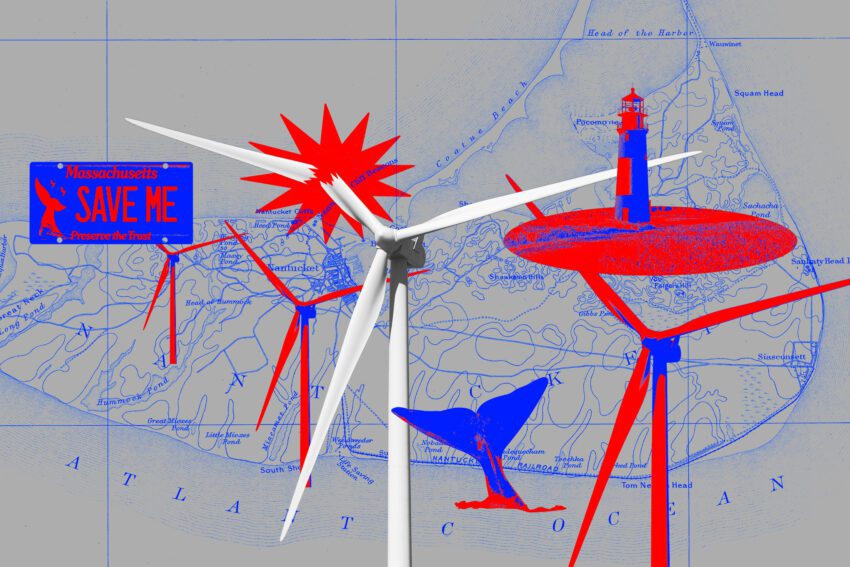
A recent incident off the coast of Massachusetts has raised significant environmental concerns after large pieces of fiberglass and Styrofoam debris were discovered scattered across Nantucket Island’s beaches.
Discovery of the Debris
A Fisherman’s Find
The unsettling discovery began with a charter boat fisherman who encountered the debris while navigating through thick fog. Describing the scene as a “mess,” he stumbled upon hundreds of pieces of white and green materials. These fragments varied in size, with some as small as a fingernail and others as large as a truck hood. The wreckage was not only alarming in its volume but also in its implications for the local marine environment.
Impact on Nantucket’s Shoreline
By the following morning, the tide had transported the debris approximately 12 nautical miles, leading to a grim awakening for Nantucket residents. They found their picturesque beaches littered with pieces of fiberglass and Styrofoam, intermixed with natural elements like seaweed and shells. Waves continued to thrust this flotsam onto the sand, further complicating the cleanup efforts. Local authorities and environmental groups quickly mobilized to assess the situation, raising concerns about the potential impact on marine life and coastal ecosystems.
Identifying the Source
Tracing the Debris
It did not take long for investigators to trace the debris back to its origin. The wreckage was linked to Vineyard Wind, a company involved in the development of offshore wind energy projects in the region. As the first major offshore wind farm in the United States, Vineyard Wind has been a focal point in discussions about renewable energy and its environmental implications. The discovery of the debris has put the company under scrutiny, raising questions about the safety and environmental protocols in place for such large-scale projects.
Vineyard Wind’s Response
In response to the incident, Vineyard Wind issued a statement acknowledging the situation and emphasizing their commitment to environmental stewardship. The company noted that they are working closely with local agencies to address the cleanup and assess any potential environmental impact. Their proactive approach aims to mitigate concerns and reassure the public that they are taking the necessary steps to rectify the situation.
Environmental Implications
Potential Risks to Marine Life
The presence of fiberglass and Styrofoam in marine environments poses several risks. These materials can break down into microplastics, which are harmful to marine life. Fish and other aquatic organisms may ingest these particles, leading to bioaccumulation and potential toxicity in the food chain. Additionally, the physical presence of debris can disrupt habitats and nesting sites for various species, further exacerbating the environmental impact.
Community Concerns
Local residents have expressed their concerns regarding the incident. Many are worried about the long-term effects on the island’s ecosystem and the potential for similar occurrences in the future as offshore wind projects expand. The incident has sparked discussions about the balance between renewable energy development and environmental protection, highlighting the need for stringent regulations and oversight in the industry.
Broader Context of Offshore Wind Development
Vineyard Wind’s Project Overview
Vineyard Wind is set to play a pivotal role in the United States’ transition to renewable energy. The company’s project, which is located about 15 miles off the coast of Martha’s Vineyard, aims to generate 800 megawatts of electricity, enough to power approximately 400,000 homes. This project is part of a larger push for wind energy along the East Coast, where numerous other developments are in various stages of planning and execution.
Regulatory Framework and Safety Protocols
The incident raises critical questions about the regulatory framework governing offshore wind projects. Currently, the Bureau of Ocean Energy Management (BOEM) oversees the leasing and development of offshore energy resources. However, critics argue that existing regulations may not be sufficient to prevent environmental mishaps. Stakeholders, including environmental organizations and local communities, are calling for more robust safety protocols and contingency plans to address potential accidents.
Looking Ahead
Future of Offshore Wind Energy
As the U.S. continues to invest in renewable energy, the lessons learned from this incident could shape future policies and practices in offshore wind development. The need for a comprehensive approach that prioritizes environmental protection alongside energy production has never been clearer. Stakeholders are advocating for increased transparency and community involvement in decision-making processes related to offshore projects.
Community Engagement and Education
In light of the recent events, community engagement and education will be crucial. Local organizations are working to inform residents about the potential impacts of offshore wind projects, as well as the importance of sustainable practices. Educating the public about the benefits and risks associated with renewable energy development can foster a more informed dialogue and promote collaborative solutions.
Conclusion
The recent discovery of debris from Vineyard Wind off the coast of Nantucket serves as a stark reminder of the environmental challenges associated with renewable energy development. As the industry continues to grow, it is essential for companies, regulators, and communities to work together to ensure that the transition to clean energy does not come at the expense of the environment. The path forward will require careful consideration of the lessons learned from this incident and a commitment to protecting the ecosystems that are vital to both marine life and coastal communities.
Source: Original reporting
Was this helpful?
Last Modified: August 25, 2025 at 5:49 pm
0 views















